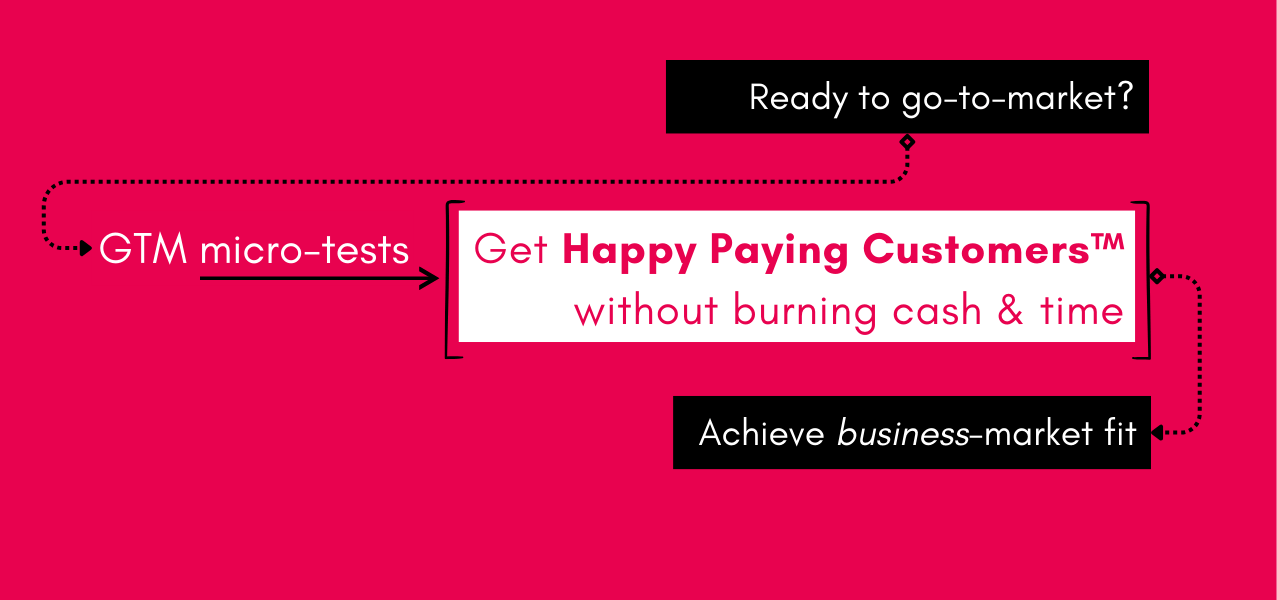- $0-1M Marketing Newsletter
- Posts
- Go-to-market micro-tests: what is it?
Go-to-market micro-tests: what is it?

If you follow me on LinkedIn, you’ve likely seen my posts about ‘go-to-market micro-testing’. This term is how I describe the process I use with founders who are working on their v1 marketing to generate their first $250K ARR for their test startups.
Here are reactions from founders and GTM experts on a recent post about it:
“More founders would benefit by following this process. Test the areas that are less clear, test an indisputably broken process but please also lock in what is working well, what isn’t on fire today. Well argued, Sweta, I’m sold on your approach!”
“Lots of wisdom here Sweta, but I think the most important part might be the focus on invalidating assumptions. Many early stage startups spend too much time proving what they already know, rather than questioning every belief. It’s a simple mindset shift, but substantially accelerates progress.”
“This post is full of GTM wisdom and love the clarity of approach. Anyone in my network looking for GTM support should chat with Sweta…”
I’ve been using this methodology for nearly a decade. I only recently coined this term in a conversation where I was explaining my go-to-market experimentation process.
In this newsletter, I am breaking down:
🔐 What are the GTM components?
🧪 What is GTM micro-testing?
🧩 Why this approach?
🚀 How does it work in practice?
🏃How to start GTM micro-testing?
I invite you to also write back with questions, reactions, and feedback as I continue to work on the definition and documentation!
🔐 What are the GTM components?
+ parameters (goal, pricing, SWOT)
+ customer (who, outcome, status quo)
+ positioning (what, why us)
+ marketing (playbook)

Components of a go-to-market plan and GTM micro-test
🧪 What is GTM micro-testing?
Running experiments to (in)validate a tech startup’s hypothesized go-to-market motion. The process involves “locking” components of the GTM the founders are most confident in and identifying various options for one component. Then, fill in the remaining components in a way that hypothetically helps you solve the business-market fit puzzle.
It’s a hypotheses-driven way to design and test your GTM motion to get more Happy Paying Customers.
🧩 Why this approach?
No one knows what will work with a startup’s GTM. You cannot copy-paste another startup’s playbook. So, we must develop our hypothesized GTM plan and get to work testing it. The velocity of testing and committing to this process is the only replicable playbook for every tech startup.
🚀 How does this work in practice?
We begin by documenting the hypotheses for all of the key components of the go-to-market plan. Then, we begin designing and running micro-tests for the component we’ve selected as the key, for now. Here’s an example for a b2c SaaS startup I am working with.

🏃 How to start GTM micro-testing?
Start for free with the 5 go-to-market mistakes to avoid video.
To DIY it, apply to join the Founder-Led Marketing Club with other founders also figuring out their v1 marketing.
Work with me. I’m at capacity this month but for July, I am accepting 2 smart, kind founders who are ready to get on the path to get more Happy Paying Customers and achieve business-market fit. Book a free consultation with me.
🤔 What do you think?
I coined the term ‘go-to-market micro-testing’ by accident when trying to explain this process to founders I was working with. Above is my work-in-progress description of the term and process. What do you think? Does it resonate? What questions come up for you? Hit reply to let me know. Or weigh in on LinkedIn here.